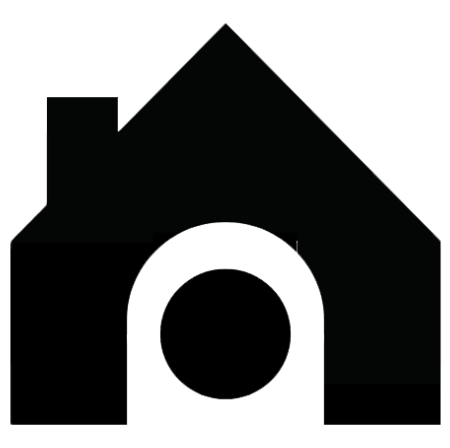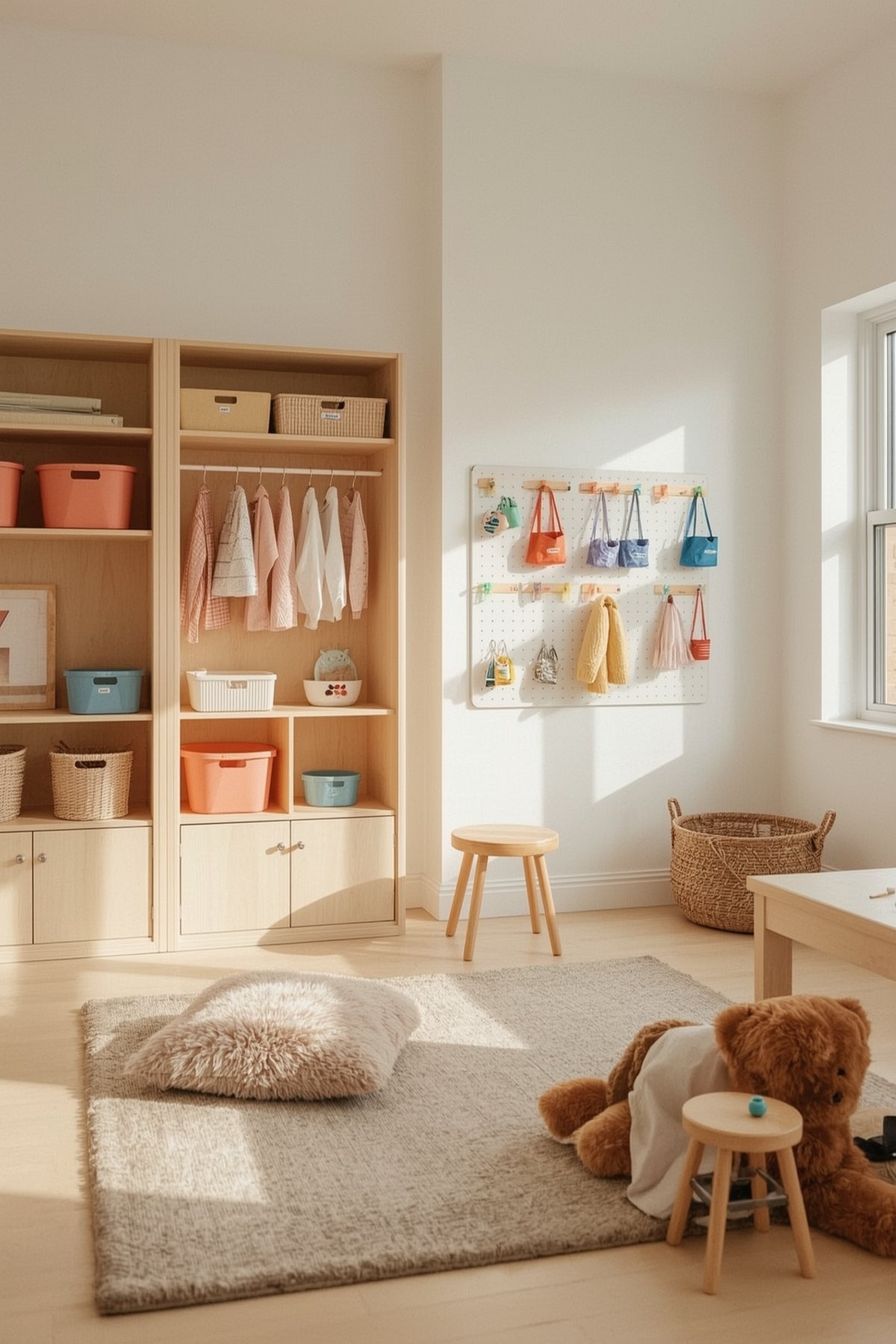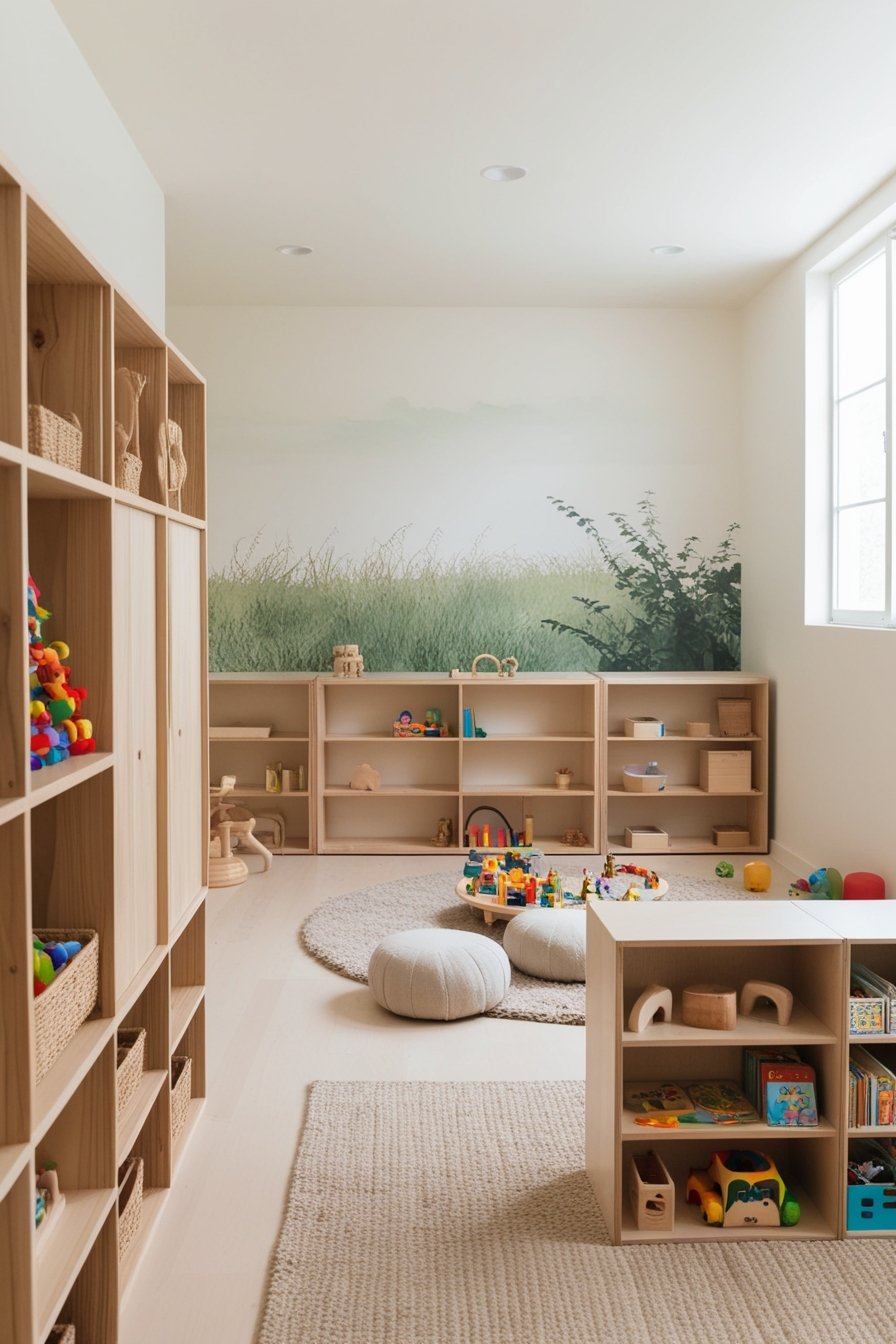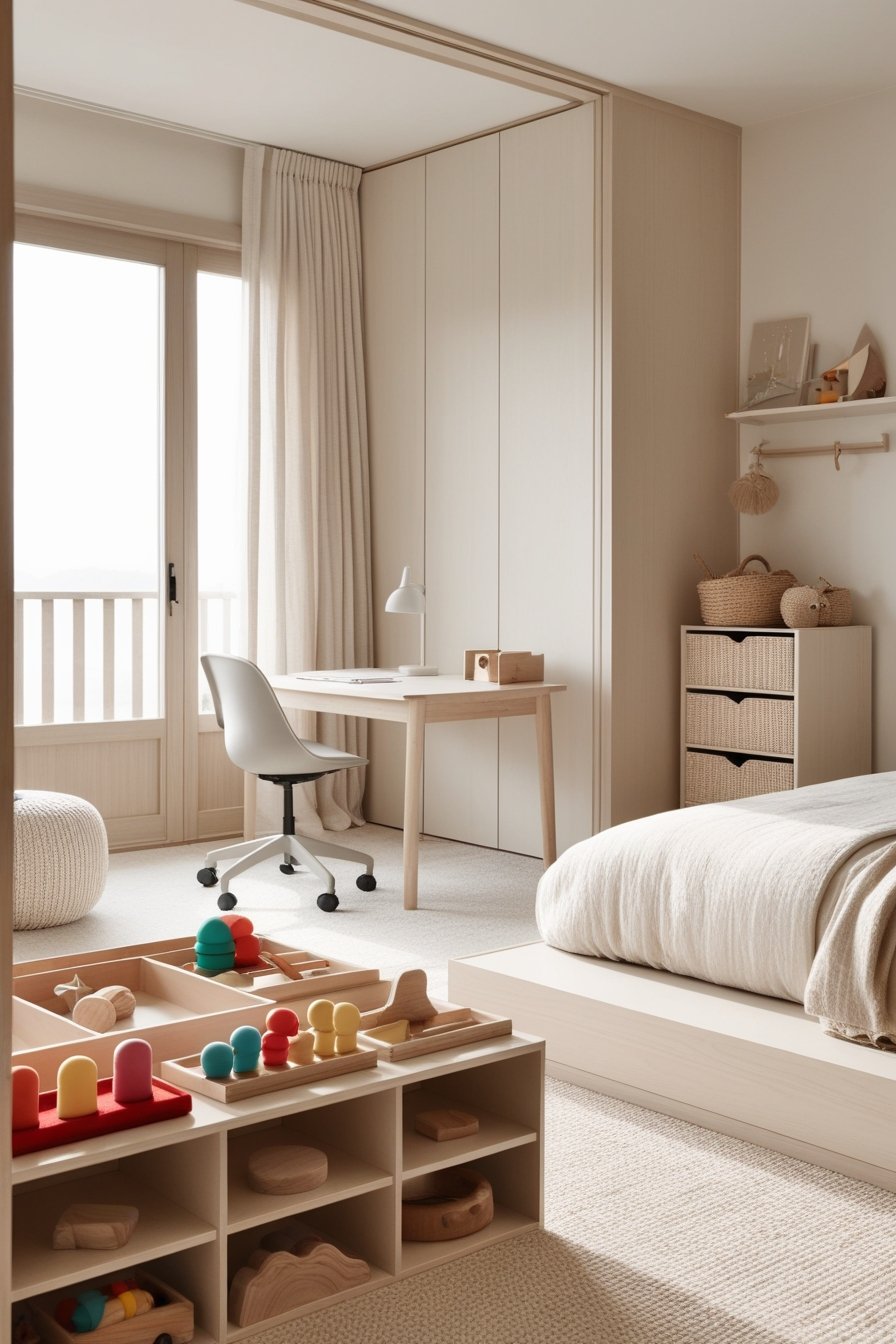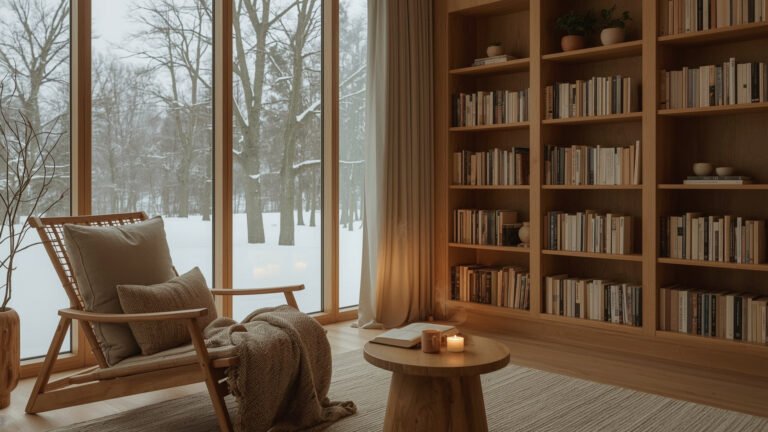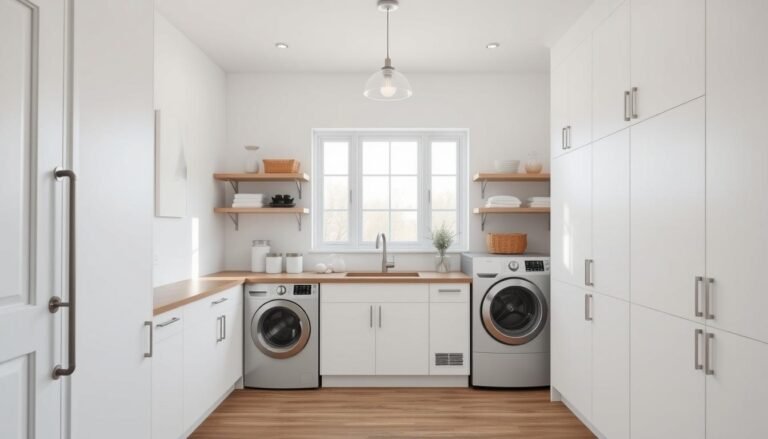Children’s Playroom Storage and Organization system Ideas for Happy Kids
Kid-friendly organization systems for children’s playroom storage can change things. Simple storage solutions help kids learn to put things away. For example, labeled bins and baskets make it easy for them to tidy up after playtime.
Organizing their space helps kids do well and makes our lives better. In this article, we’ll share easy tips for organizing kids’ rooms and improving children’s playroom storage. We’ll show you how to make your home more peaceful and organized.
Key Takeaways
- Simple storage solutions can help kids develop good habits.
- Labeled bins and baskets encourage kids to put away their belongings.
- Organizing kids’ rooms can create a more peaceful home environment.
- Kid-friendly organization systems promote independence in children.
- Practical tips can make a big difference in maintaining an organized home and better children’s playroom storage.
Understanding the Importance of Organization for Kids
It’s key to have an organized space for kids. Good organization helps them learn, grow, and feel responsible. We’ll see why organization is important for kids and how it helps them grow and how children’s playroom storage supports that.
Why Kids Need a Structured Environment
A tidy space makes kids feel safe and in charge. When things are organized, they can focus better. This leads to less stress and more calm.
For example, neat children’s playroom storage helps kids find their toys easily. This makes their lives simpler and playtime more fun.
Benefits of Organization on Learning
Organization boosts a child’s learning. A clean workspace means they can find what they need fast. This makes homework and projects easier.
It also helps kids learn to study well. Using children’s organization ideas, like a labeled shelf or a simple bin system, can make schoolwork more enjoyable.
Fostering Independence through Systems
Teaching kids to organize helps them grow up. It teaches them to manage their time and care for things. This is where kid-friendly organization systems come in.
They guide parents in making systems that work for children. Good children’s playroom storage and routines encourage kids to take care of their space.
Understanding the value of organization helps parents support their kids. We’ll look at how to make a system that fits your child’s needs and how to choose the right children’s playroom storage.
Assessing Your Child’s Needs and Preferences
Understanding your child’s unique needs is key to a good organization system. You must know their habits, likes, and age level to pick great children’s playroom storage.
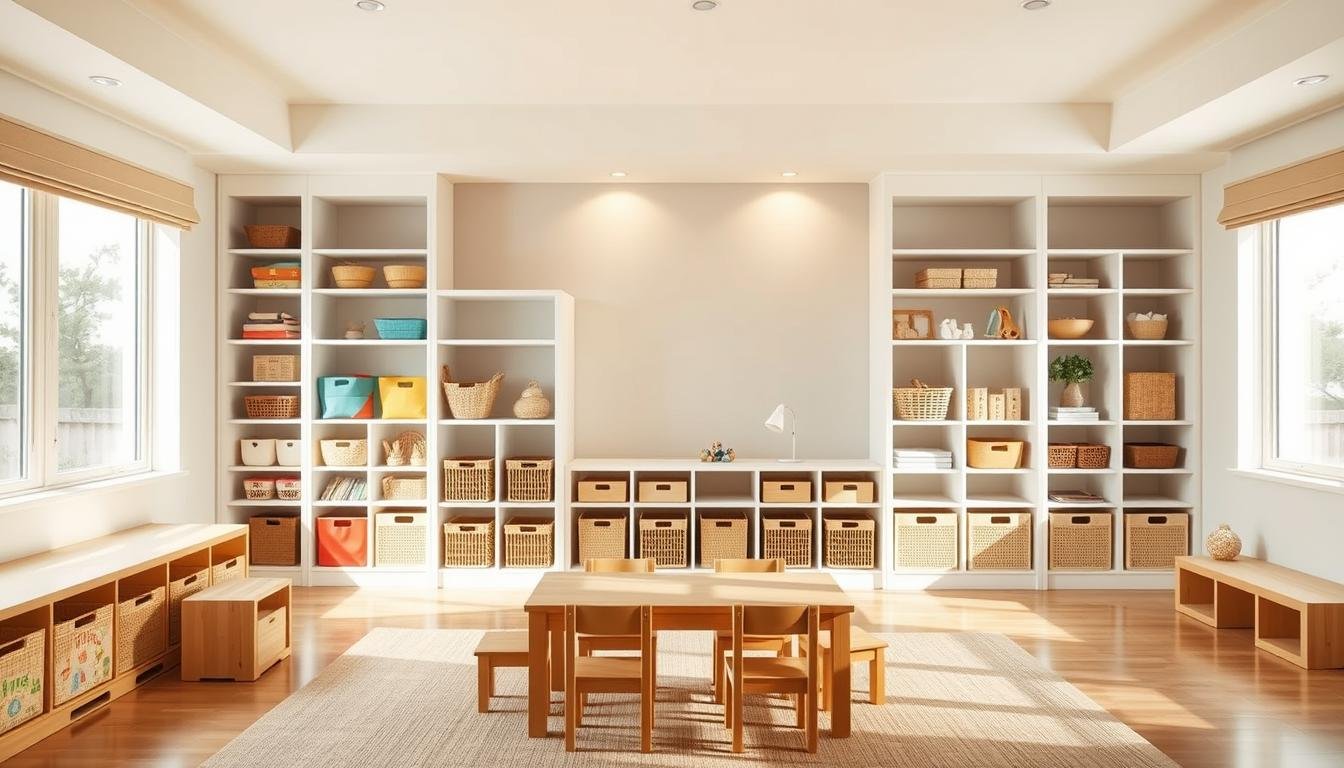
Observing Natural Habits and Routines
Watch how your child organizes their toys, books, and clothes every day. Do they have a special way to arrange things? Knowing their natural habits helps you create a system that fits their way of doing things.
If your child likes to spread out toys, use kid-friendly storage solutions. Colorful bins or baskets make it easy for them to clean up and fit into a good children’s playroom storage plan.
Engaging Kids in the Process
It’s important to get your child involved in setting up their organization system. Ask them what they like and what storage makes sense to them. This makes them feel part of the process and helps you understand their needs better.
Ask questions like: “What makes cleaning up easier for you?” or “How do you want to organize your books?” Letting kids choose some of their children’s playroom storage pieces makes them more likely to use them.
Understanding Developmental Stages
Children grow and change, and so do their needs. A preschooler might need simple, visual cues, while an older child can handle more complex systems. Knowing their age helps you make a system that’s right for them.
By understanding your child’s needs, you can make a playroom organization system they’ll enjoy. The same goes for their closet, creating a kids’ closet organization system that works well and links to the children’s playroom storage you chose.
Choosing the Right Tools for Organization
Choosing the right tools is key for a kid-friendly organization system. The right tools help keep spaces tidy and easy for kids to use.
Effective organization tools also teach kids important skills like responsibility and time management. Smart children’s playroom storage teaches habits that last.
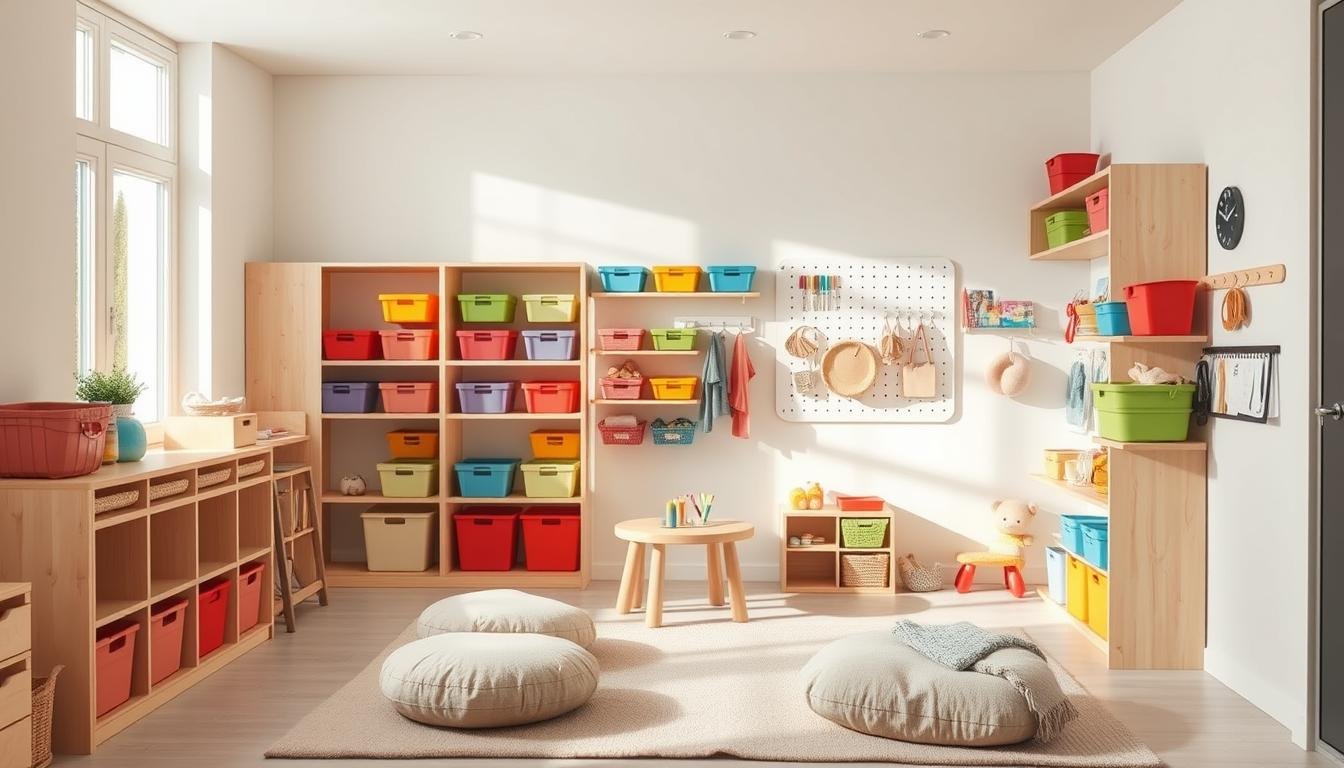
Age-Appropriate Storage Solutions
Using storage that fits a child’s age is important. Young kids do well with bins and baskets that have simple labels. Older kids can use more complex systems like shelves and desk organizers.
For example, kids’ toy storage ideas include colorful bins at child height. These bins are easy for kids to reach, helping them put away toys after play. Good children’s playroom storage uses the right sizes for your child’s hands.
Utilizing Color-Coding Systems
Color-coding is a simple way to organize. It uses different colors for different things or people. This makes it easy for kids to understand and follow.
This method works for many things, like labeling bins or making a color-coded calendar. Color-coding pairs well with children’s playroom storage to keep things in the right spot.
Incorporating Labels for Clarity
Labels are crucial for kid-friendly home organization. They help kids find where things go, keeping spaces organized.
Using a label maker or making labels by hand adds a personal touch. It makes the system more fun for kids and improves children’s playroom storage.
Creating a Designated Homework Zone
Setting up a special area for homework helps kids get into a routine. It keeps them focused on their work. A tidy homework zone boosts a child’s productivity and grades.
Setting Up a Study Space
First, pick a quiet, comfy spot for studying. Make sure it’s clutter-free. Use kid-friendly storage solutions like colorful bins to keep things tidy and have children’s playroom storage nearby for easy access.

Tools for Homework Assistance
Stock the homework zone with what you need. This includes a desk, a comfy chair, and good lighting. Add children’s organization ideas like a bulletin board to stay organized.
Reducing Distractions in the Area
Keep the homework zone quiet and away from distractions. Turn off TVs and phones. Use apps to help stay focused. This makes organizing kids’ rooms easier and helps them learn better, especially when children’s playroom storage keeps materials handy.
Streamlining Daily Routines with Checklists
Using checklists is a great way to make daily routines better for kids. It helps them feel responsible and independent. Checklists can be used for many parts of a child’s day, like getting ready in the morning or bedtime.
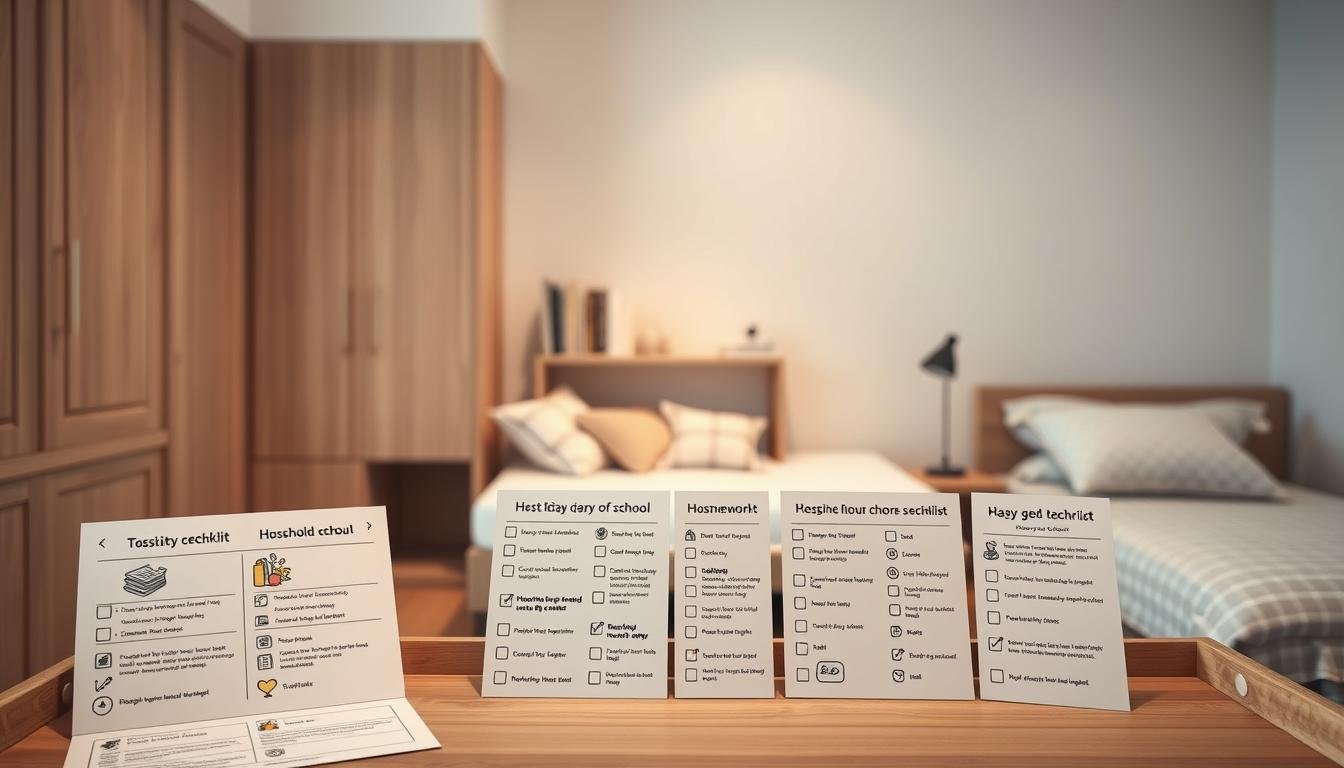
Variety of Checklists for Kids
There are many kinds of checklists for kids. Young ones might like pictures, while older kids might prefer text. The goal is to make it fun and easy to understand.
Morning Routine Checklist: Wake up, brush teeth, wash face, get dressed, have breakfast.
Homework Checklist: Gather materials, read instructions, do tasks, review work.
Visual vs. Text-Based Checklists
Choosing between visual and text checklists depends on the child’s age and what they like. Visual checklists use pictures for tasks, which is good for young kids. Older kids might prefer text checklists.
Keeping Checklists Updated and Fun
To keep checklists useful, update them often and make them fun. Use bright colors, stickers, or even a chalkboard. Letting kids help with checklists makes it more fun and helps them feel in charge.
Checklists help kids stay organized and learn good habits. They are a simple but powerful tool. They help with kid-friendly home organization and teach important life skills while working with children’s playroom storage.
Organizing Toys and Play Areas
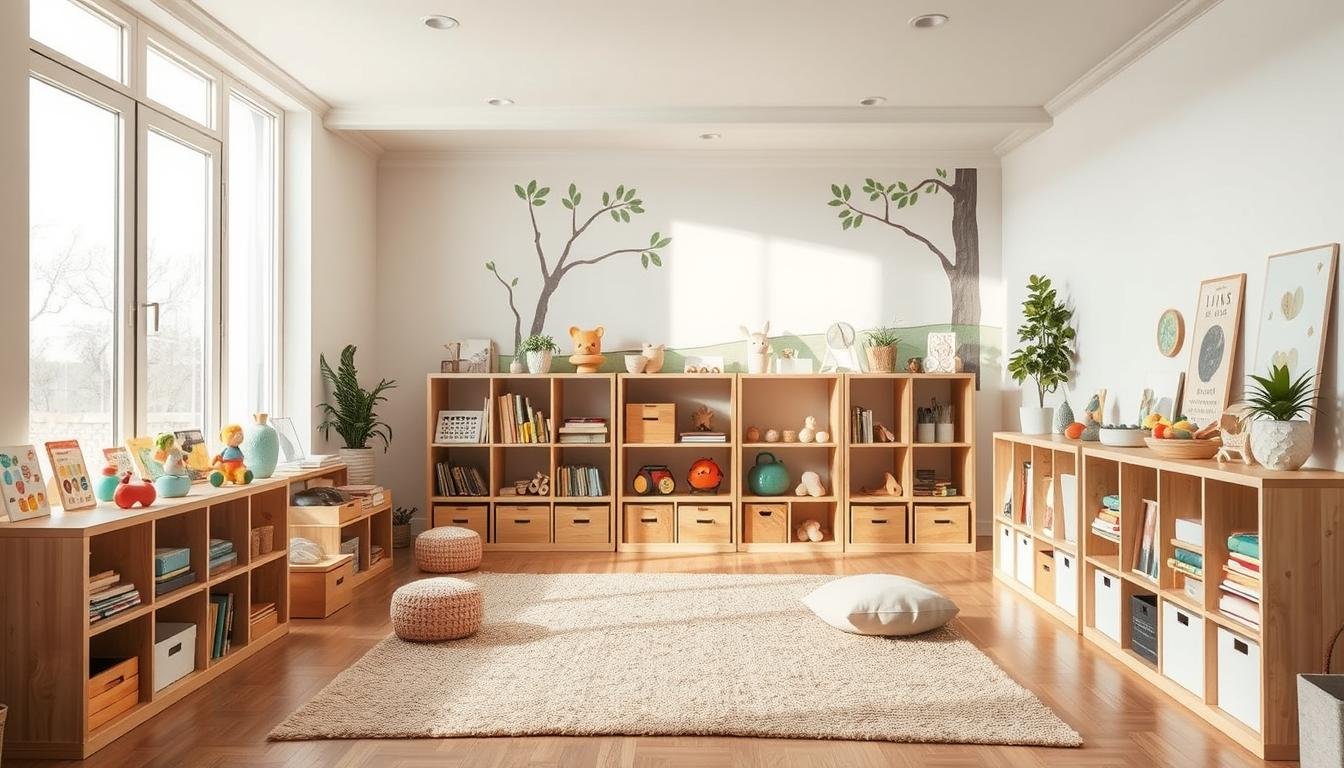
Keeping toys and play areas organized is crucial for a clean and fun space for kids. A tidy play area helps kids play creatively and learn better.
Categorizing Toys by Type
Sorting toys by type is a smart way to organize. It makes it easy for kids to find what they need. It also teaches them to sort and choose.
For example, using bins for different toys keeps things neat. This helps kids learn to organize and keeps children’s playroom storage useful.
Implementing Storage Solutions that Attract Kids
Storage that kids like makes them want to clean up. Bright bins and easy-to-reach shelves are great. Labels with pictures or simple words make it fun.
Letting kids pick storage solutions makes it a fun team effort. It makes them feel involved and responsible and makes children’s playroom storage something they enjoy using.
Regular Decluttering Practices
Decluttering regularly keeps play areas tidy. Set aside time to sort out old or broken toys. This keeps the area fresh and interesting for kids.
Make decluttering a game or activity. It teaches kids to take care of their space. This way, they learn to value their belongings and keep their children’s playroom storage neat.
By using these tips, parents can make a play area that’s both organized and fun. Kids’ toy storage ideas and playroom organization are more than just tidiness. They help kids grow and learn.
Encouraging Routine Maintenance of Organized Spaces
Teaching kids to keep their spaces tidy can be fun. By adding cleaning to their daily or weekly tasks, they learn to care for their things.

Making Cleaning a Fun Activity
Make cleaning fun by turning it into a game. Try setting a timer and seeing who can pick up toys the fastest. It makes cleaning a fun challenge.
Use storage that kids like and works well. Label bins with pictures or colors. This helps them know where things go, making cleaning easier and more fun.
Making it a family affair by cleaning together helps everyone work together. It builds teamwork and cooperation and helps keep children’s playroom storage in good shape.
Developing a Weekly Organization Schedule
Having a weekly cleaning schedule keeps things tidy. Pick a day or time each week for cleaning and organizing. This teaches kids to plan and manage their time.
Make a checklist or a visual reminder of tasks. This helps kids stay on track. Remember to change the schedule if needed to keep it doable.
By using these tips, keeping a kid-friendly home organization system is easy. It’s about teaching kids good habits. These habits help them learn the importance of being organized and responsible and make children’s playroom storage work for your family.
Celebrating Successes and Milestones
When we set up kid-friendly organization systems, it’s key to praise our kids’ hard work. Celebrating their small wins can really help them stay motivated to keep their spaces tidy and their children’s playroom storage organized.
Acknowledging Efforts and Achievements
It’s important to recognize our kids’ efforts and successes. This helps them feel responsible and proud of their organized spaces. By praising their hard work, we encourage a positive attitude towards keeping things neat.
Setting Up Reward Systems
Using rewards can really motivate kids to keep their spaces organized. Rewards can be simple, like stickers or stars, or bigger, like special outings or privileges. The goal is to make the rewards meaningful and reachable.

Tracking Progress Together
Tracking progress with our kids shows them how far they’ve come. It encourages them to keep going. By regularly checking their systems and making changes, we help them stay on track. This builds a lifelong habit of keeping things organized and helps children’s playroom storage remain useful.
Adapting Systems as Kids Grow
As kids get older, their needs change. It’s important to check their systems every year. This makes sure they work well.
Annual Re-evaluation
Checking needs every year helps adjust to growing kids. We look at their storage and make changes if needed. This includes updating children’s playroom storage to match new interests.
Involving Kids in the Process
Getting kids involved in organizing teaches them important skills. It also makes them want to keep their space tidy. When organizing their rooms, it’s key to let them help decide.
Transitioning to Complex Systems
Kids need more complex systems as they grow. Moving from simple storage to more detailed systems is crucial. This includes study areas and daily routines.
Adapting systems helps kids learn important life skills. It also keeps their space clean and organized and improves the children’s playroom storage over time.
FAQ
How can I create a kid friendly organization system that my child will actually use?
Start by understanding what your child needs and likes. Watch how they act and what they do every day. This helps you make a system just for them.
What are some effective storage solutions for kids’ toys and belongings?
For kids, use bins, shelves, and cabinets that fit their age. Use colors and labels to help them find things. Bins and baskets made for kids are also great.
How can I help my child stay organized and maintain their organized spaces?
Make cleaning fun and have a weekly schedule. Create a routine that works for your family. Celebrate when they do well to keep them motivated.
What are some tips for creating a designated homework zone?
Make a study area quiet and comfy. Give them tools like a desk and chair. Use charts to help them stay on track.
How can I adapt my child’s organization system as they grow and develop?
Check their needs every year and let them help with new ideas. As they get older, move to more complex systems like planners.
What are some benefits of using checklists for kids?
Checklists teach kids to be responsible and independent. They help with routines and reduce stress. Choose visual or text checklists based on your child’s preference.
How can I make organizing toys and play areas a fun activity for my child?
Involve your child and make it a game. Sort toys and use fun storage. Regularly clean up and praise their help.
What are some ways to celebrate my child’s successes and milestones in maintaining their organized spaces?
Recognize their hard work and achievements. Use rewards like stickers to motivate them. Celebrate together to keep them going.
The Bottom Line
Children’s playroom storage isn’t just about neat shelve. It’s about building routines, confidence, and independence. Pick simple, age friendly storage, involve your kids, and keep systems flexible as they grow. Small steps like labels, reachable bins, color coding, and fun checklists make tidy spaces feel doable and even enjoyable. The result is a calmer home, happier kids, and lifelong organization skills.

ABOUT the AUTHOR
TOKI; INTERIOR DESIGN & lifestyle CONTENT CREATOR.
Hey there! I’m Toki—the design-obsessed brain behind Dwell Studio 24. I’m a content creator passionate about interior design, photography, and creativity, living in a 77-year-old house with my husband and our awesome three kids. I write about interior design, furniture, home topics, and my lifestyle, including travel, recipes, skincare, and daily routines. I hope to inspire your next project and lifestyle!
ABOUT the AUTHOR
TOKI; INTERIOR DESIGN & lifestyle CONTENT CREATOR.

Hey there! I’m Toki—the design-obsessed brain behind Dwell Studio 24. I’m a content creator passionate about interior design, photography, and creativity, living in a 77-year-old house with my husband and our awesome three kids. I write about interior design, furniture, home topics, and my lifestyle, including travel, recipes, skincare, and daily routines. I hope to inspire your next project and lifestyle!
ABOUT the AUTHOR
TOKI; INTERIOR DESIGN & lifestyle CONTENT CREATOR.

Hey there! I’m Toki—the design-obsessed brain behind Dwell Studio 24. I write about interior design, furniture, home topics, and my lifestyle, including travel, recipes, skincare, and daily routines. I hope to inspire your next project and lifestyle!
